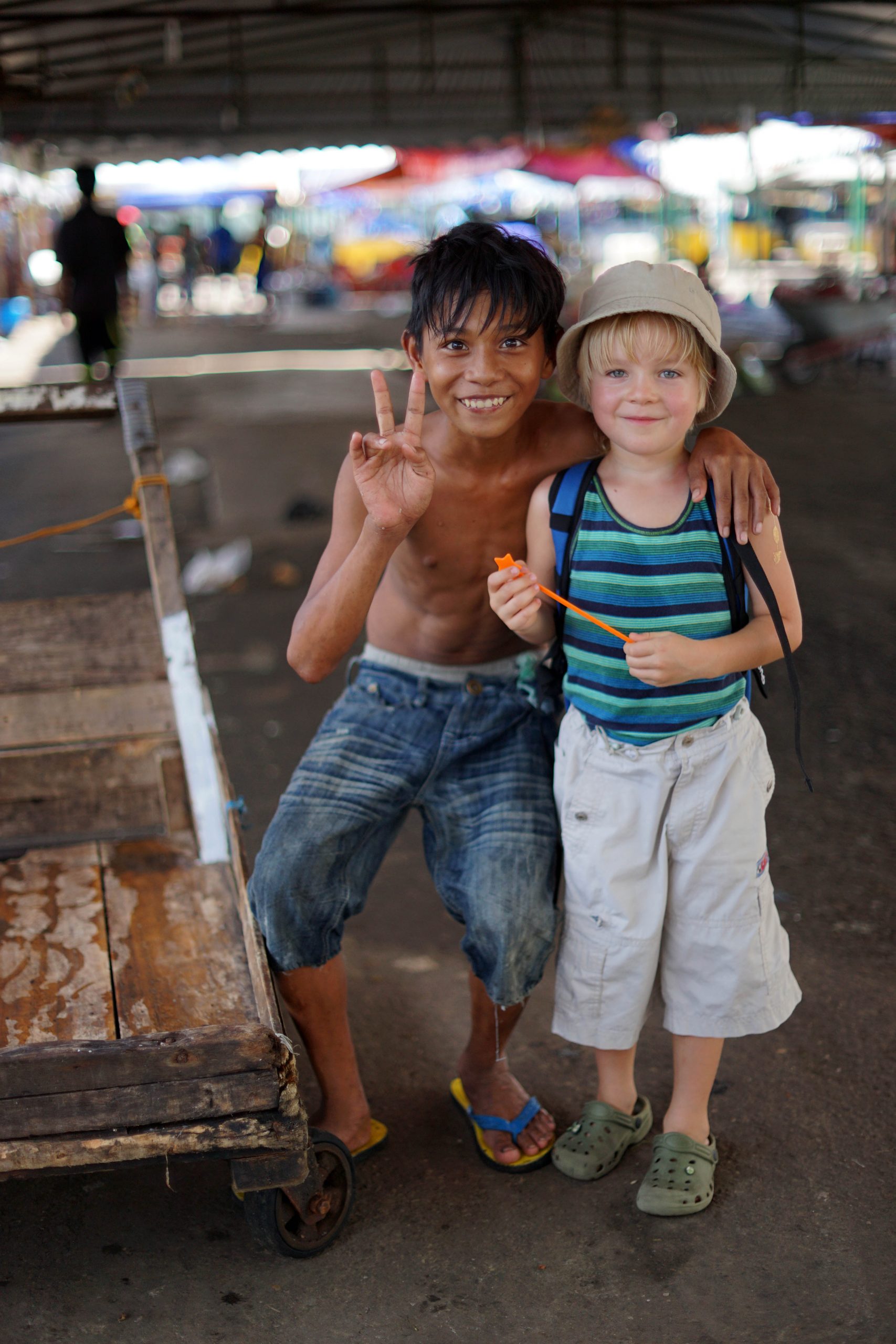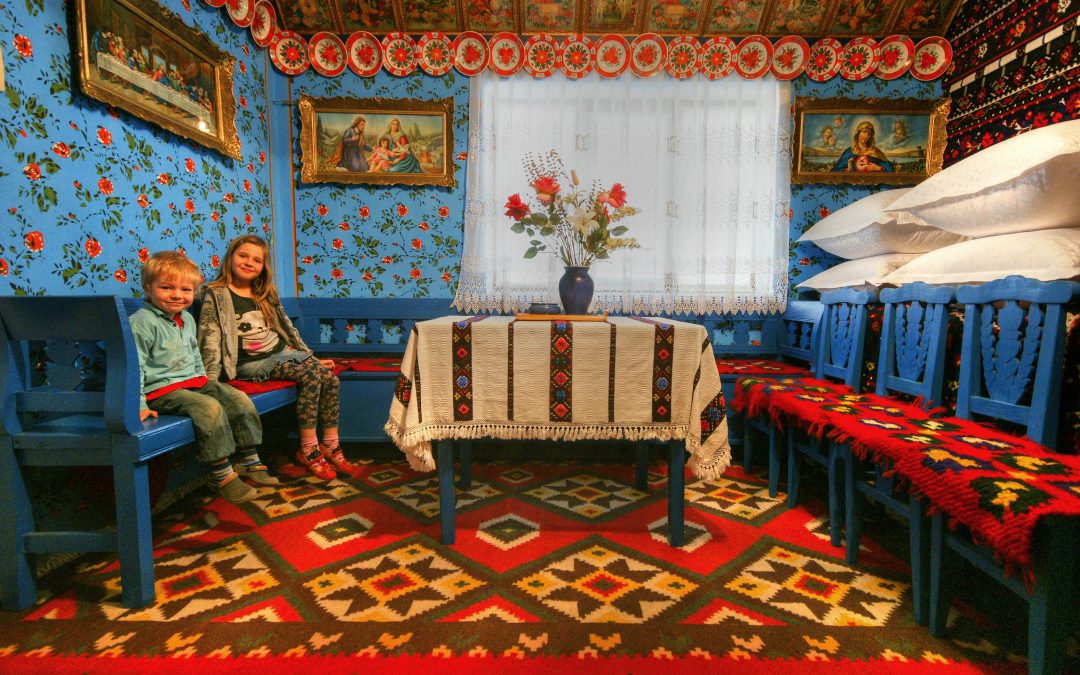Kids are natural and grateful travellers. Their needs are small compared to those of grown-ups, they don’t require any special conveniences, they show a natural curiosity for what goes on around them. They also love to be outdoors, like camping, watching animals in the wild, searching for hidden treasures and counting stars… Is it worth taking youngsters along on your travels, getting to know the world and all its tastes with them by your side?
text & photos © Dominika Zaręba

The world hidden in details
Children can get interested in anything, especially if it has its own story or history. And if you can touch it, all the better. Kids have a great way of feeling the climate of a place, a natural sensitivity and curiosity toward the world. They teach us to discover details which often go unnoticed or seemingly carry little or no meaning to us adults. Following what the child discovers means seeing the world in a different dimension, color and perspective. What are some of the things they see and we don’t: flashes in the window of a castle tower, dolphins jumping over the waves somewhere on the horizon, a boy flying kites in the shape of a galley, a cat fast asleep behind a geranium, rock lion sculptures in front of the palace which remind them of Aslan from Narnia, strange shadows on the cobbled street right before sundown, a pointed hat of a vendor selling peaches on market day, the largest pumpkin and the smallest crab in the world… – Mom, why is the moon sometimes sad and sometimes happy?… – Why does a mange have green skin but inside is yellow? What about a watermelon? Why do cats have whiskers and alligators long snouts? What’s the difference between an alligator and a crocodile? … You should be prepared to answer the young traveller’s difficult questions and give your imagination free rein…

In the local rhythm
Children are great at adapting to local circumstances such as the local lifestyle, because they don’t require special amenities, aren’t exacting when it comes to conditions required to get some rest, like to sleep in tents, caravans, on a hammock, on the grass. They inadvertently break down cultural barriers and stereotypes in a natural way. When we travel with a child we’re not as much different and foreign, we in effect have the chance to get an inside look at the atmosphere in the community and its traditions. In the process it turns out that all mothers, fathers and guardians the world over have much more in common with one another and often the exact same concerns and joys.
Indonesia, a busy day at the market in Ubud, a mountainous town in Bali famous for its artistically gifted inhabitants. The stalls are full of exquisitely colorful fabrics, hand-painted mahogany & teak furniture, hammocks, multicolored garments, jewelry, wooden masks, paintings, spices. An Indonesian mother who is selling at the market with her younger daughter shows me how to carry my six-month old Staś in a colorful sarong: – Do you feed him rice? Is he your Wayan or Made? (on Bali, Wayan is a frequent name of the first child, Made the second child, Nyoman the third child…) – she has many questions for me and looks on with tenderness at the youngest traveler she has ever seen here. Little children on Bali are held in very high esteem, the natives believe the younger the child the closer it is to heaven and to the kingdom of good spirits…
Outside is the Andalusian spring, we’re in Sevilla, at a tapas bar on Alfalfa Square, the aroma of rosemary and saffron wafts from the kitchen. Almost all the tables in the cafe garden are occupied, local residents have come for the meal of the day before the start of the siesta, when all restaurants will be closed. A Spanish mother is surprised that Jagódka doesn’t want to eat today’s menu del día which is paella de mariscos with seafood. What would cariño like to have? – she asks. – Pierogi ruskie! (Polish dumplings with mashed potatoes) – my 5-year old cries and runs over to the slide to play with her new-found friend María, who just finished gobbling up the paella. – When I grow up, I’m even going to eat crabs like Uncle Jose – she adds. Uno, dos, tres, quatro, cinco… that’s how many crabs I’ll eat – responds Jagoda suggestively and both girl burst into laughter.
A hot summer in New York. We’re eating an American-style dinner with our host family in the residential neighborhood of Jamaica. The family participates in couchsurfing, and is especially fond of offering overnight stays to visitors with children. The dinner table has hamburgers straight from the garden grill, kidney beans for vegetarians and California wine. The American mother goes through her kids’ extracurricular activities for the next day: First, I’ll take Ethan to skateboarding class in Queens, then I’ll drop Sharon off in Broadway for dance lessons. We could meet up in the afternoon on the playground in Central Park …- What did you like most about New York? – locals ask us – I think the places we got to know best were the playgrounds and the Natural History Museum. Jagódka is just now drawing the Wawel dragon for Sharon and says – This was like the funnest day I’ve ever had in my life!

Hot-dog and coke, or what gets parents worried when they’re on the road
The most difficult topic when travelling is: what are the kids going to eat? After all, your average family won’t be packing chicken soup, crepes, or anything else the kids like on the trip with them. It is true, this is the hardest part about travelling with kids. How will you convince them to try samosa in India, garbanzos with spinach in Andalucia, burritos and quesadillas in Mexico or other local delicacies? If they had it their way, they’d be eating hotdogs, french fries and sipping on sugary coke or iced tea all day long. But a vacation abroad or a weekend outing doesn’t last forever. Anyway, every child is different and has its own taste for what’s good and what’s not, so you might as well help it discover those foods and dishes which it might like – maybe an exotic fruit, a new soup or some local bread? I’m always jealous and somewhat in awe when I see my friends’ kids enjoying Hindu curry with cauliflower and potatoes spiced up with ginger, or Moroccan tagine with coriander and cumin. My little one, on the other hand, will settle for a banana pancake three times a day, and at most a small bowl of white rice. „Just no vegetables or spices with that rice, OK, mom?”… I’m encouraged by the fact that the journey is not going to last forever, and we’ll sooner or later get to a market where there are bound to be fruits on sale, plus a diet on rice, bread and water never hurt anyone, did it? The most important thing is that we’re together and we’re each in their own way tasting the world around us – I’m getting more out of the culinary side of it, while my son or daughter is experiencing more the untangible climate of the places we visit, their colors and smells. I really think it’s those flavors that will turn into lasting memories, even if they don’t remember the places they went to when they were young.

English translation: Piotr Szmigielski

